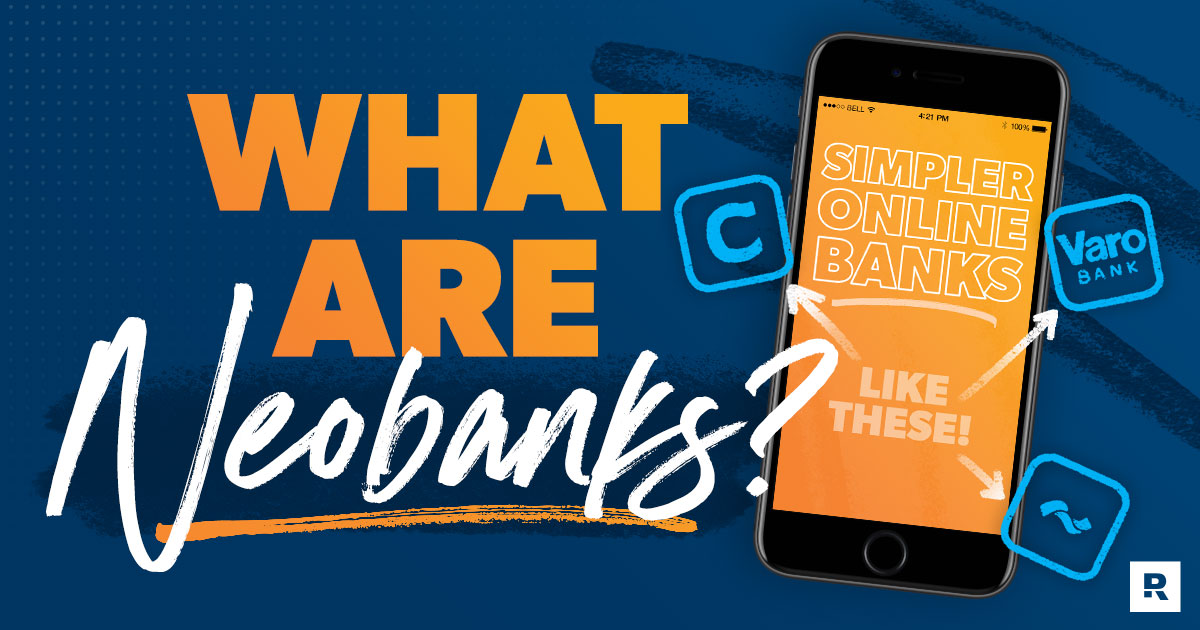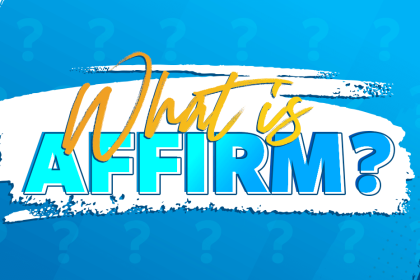Do you remember when you had to physically drive to your bank and talk with a teller to manage your checking and savings accounts? Actually, scratch that. Some of you reading this may not even remember those days—they were that long ago. Now, banking is as simple as pulling out your smartphone.
Almost every bank—whether national, local, traditional or credit union—has an online platform for its customers. But we’ve gotten so gosh darn high-tech that some banks don’t even have buildings. And that’s what brings us to today’s topic: the neobank.
If you’ve been thinking about checking out a neobank (like Chime, Current or Varo Bank), you’re not alone. More than 14 million Americans say they currently have a neobank account, and that number is only expected to go up.1 But some of you may be asking, “What is a neobank? How do neobanks work? And how are they different from regular banks?”
Let’s dive in.
What Is a Neobank?
Simply put, a neobank is a simpler version of a regular bank that runs entirely online. They have all the basic offerings of your typical bank, like checking and savings accounts and debit cards. Some of them even offer checkbooks. And we know what you’re probably thinking: Well, if it looks like a bank and acts like a bank, then it’s a bank!
Nope. A neobank technically isn’t a bank at all. That’s because neobanks aren’t chartered with state or federal regulators—in other words, they don’t have to follow all the rules that banks have to follow.2 Neobanks also don’t typically offer any type of credit or loan programs.3 (Now that’s music to our ears!)
Okay, so if they’re not banks . . . what are neobanks? Well, by definition, neobanks are fintech (financial technology) firms that offer apps, software and other high-tech ways to virtually manage your money. That makes them attractive to tech-savvy people who appreciate a better digital experience and don’t want to go to a brick-and-mortar banking location.
Oh, and because the two often get confused, we’ll just go ahead and say that neobanks are different from challenger banks. Challenger banks are chartered, and some even keep brick-and-mortar locations, while neobanks are strictly online.
Now that all of that’s out of the way, let’s talk some logistics.
How Do Neobanks Work?
To the average customer, neobanks probably don’t seem to work much differently from any other mobile banking app. The most notable difference is that neobanks are much easier to set up. Seriously, all you have to do is download an app, make an account, and boom!—you’ve got yourself a neobank account. No paperwork. No meeting with a representative. No credit checks. All it takes is a smartphone (or computer) and a few of minutes of your time.
Another way Neobanks try to stand out from traditional banks is by claiming to offer their customers more savings, higher interest rates and fewer fees because of their branch-less model.4 But to offer bank-like services and financial security, neobanks actually have to partner with traditional banks.5
Pros and Cons of Neobanks
There are a lot of things we like about neobanks, but they may not be for everybody. Let’s look at some of the pros and cons of neobanks and how they compare to traditional banks.
Pros
- Lower costs. Because neobanks don’t have physical locations, they have fewer operating costs.6 And they’re able to pass those savings on to their customers by offering low (or no) monthly fees to keep your account up and running. That’s a big win!
- Higher interest rates. Again, because of low overhead costs, neobanks tend to offer higher interest rates to their customers. For example, while Bank of America offers regular savings accounts with only a 0.01% interest rate, some neobanks offer a high-yield savings account with up to a 0.5% interest rate.6,7 Wow.
- Convenience. While traditional banks are restricted to certain hours and locations, neobanks are available pretty much 24/7 because everything can be accessed on your smartphone.
- More fee-free ATMs in more places. No more searching for the nearest bank with a 24-hour ATM. (Or worse—having to pay a ridiculous fee for using whatever ATM is closest to you.) Most Neobanks partner with networks to offer fee-free deposits at thousands of ATMs that are found at places where you’re probably already running errands—like pharmacies and convenience stores.
Cons
- No physical branches or in-person customer service. Sure, the convenience of an online bank is great. But sometimes people want to be helped in person, especially if they’re dealing with something tricky. While we can’t speak for the customer support experience of any specific neobank, we’ve all felt the frustrations of trying to reach a helpful customer service representative over the phone. Cue the 10 minutes of elevator music. Ugh.
- Fewer accounts and services available. We love that neobanks don’t offer loans, but that also means they can’t help you with a mortgage (aka the only kind of debt we’re okay with). A lot of neobanks also won’t let you open a separate business account.
- No overhead regulations. Okay, so this is less of a con and more of a buyer beware. We don’t think it’s a bad thing that neobanks aren’t chartered with the government. But it does mean you’ll have to do a little extra homework to make sure your money is safe. Our advice? Before you sign up for a neobank account, make sure you see the letters “FDIC”—that stands for Federal Deposit Insurance Corporation. It protects you so that if your neobank sinks, your money won’t go down with it.9
Should You Use a Neobank?
We’re going to be really honest with you here—we’re a big fan of neobanks. Traditional banks have been slamming folks with fees and credit card offers for far too long. They profit off of driving people into debt, and we’re sick of it.
Budget every dollar, every month. Get started with EveryDollar!
That’s why neobanks are great. A neobank is a simple and secure place where you can store your money without fees or complications. Or at least, they should be.
Bank on Your Budget
The best way to control your money is with a budget. Sign up for EveryDollar and start today–for free!
Sign Up
Read the full article here

















